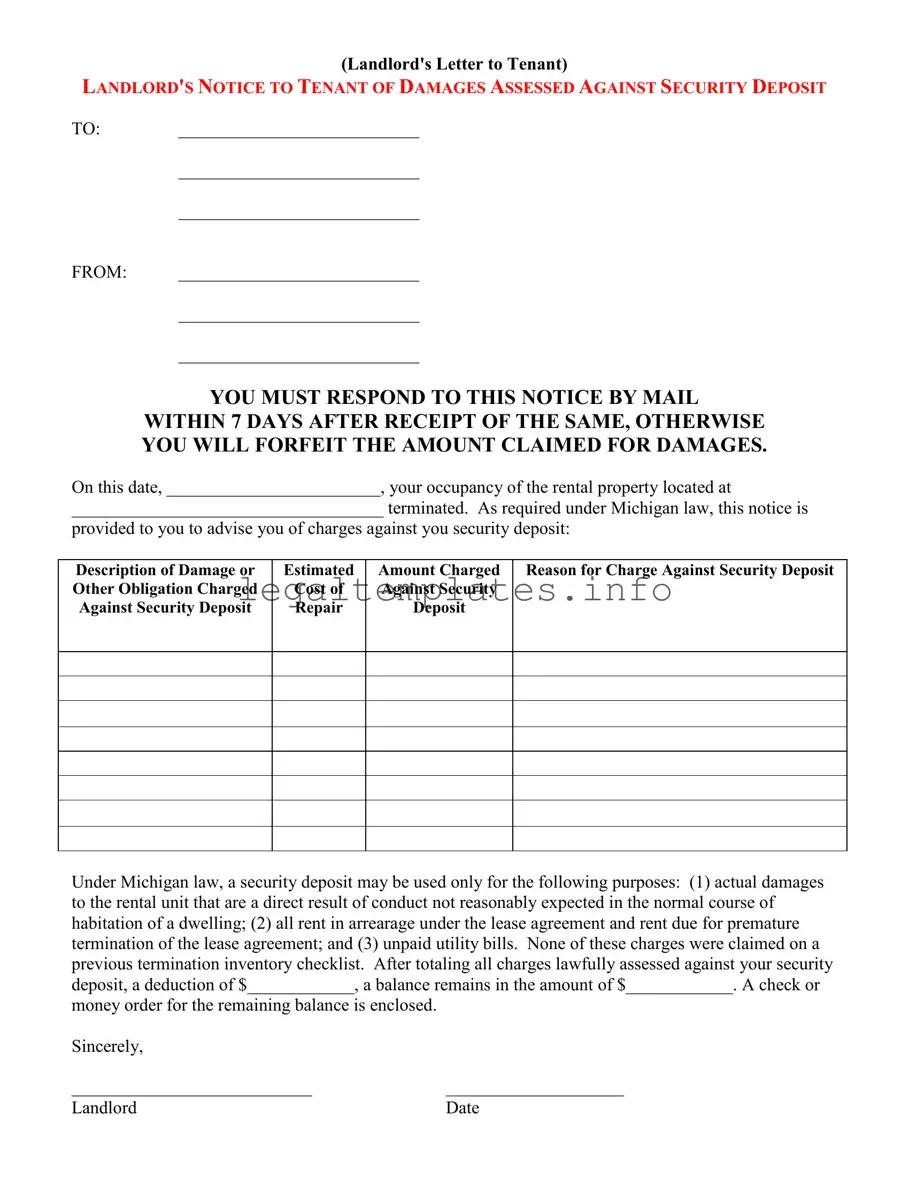What is the purpose of the Landlord Damages Letter?
The Landlord Damages Letter notifies tenants of the deductions from their security deposit due to damages, unpaid rent, or utility bills. It outlines the specific amounts being deducted for each type of damage or unpaid obligation, and informs tenants of the balance, if any, that will be returned to them.
How soon must a tenant respond to this notice?
Tenants are required to respond to this notice by mail within 7 days after receiving it. Failure to do so will result in the tenant forfeiting the amount claimed for damages by the landlord.
What can a security deposit be used for according to Michigan law?
Under Michigan law, a security deposit may be used for three main purposes: to cover actual damages to the rental unit beyond normal wear and tear, for any unpaid rent, and for unpaid utility bills.
Does the landlord need to provide evidence of the damages?
The letter must include a detailed description of the damages, the estimated cost for each, and the reason each charge is being made against the security deposit. While the letter itself is a form of notification, documentation supporting the landlord’s claims, such as receipts or photos, should be available upon request.
What happens to the remaining balance of the security deposit?
After all lawful deductions are made, if there's a balance remaining from the security deposit, the landlord is required to return this amount to the tenant. This is typically done by enclosing a check or money order with the letter.
Can a tenant dispute the charges outlined in the letter?
Yes, tenants have the right to dispute the damages and charges outlined by the landlord. They must do so in writing, within the 7-day response period mandated by the notice. Disputes may involve providing evidence that contradicts the landlord's claims or that justifies the condition of the rental property.
What happens if the security deposit does not cover all the damages?
If the total cost of the damages, unpaid rent, or utility bills exceeds the amount of the security deposit, the landlord may pursue additional legal action to recover the remaining balance. This could involve small claims court or other legal avenues depending on the amount and the jurisdiction.
Are tenants automatically responsible for all types of damages to the rental property?
No, tenants are generally responsible for damages that result from negligence, abuse, or violation of the lease terms. Normal wear and tear, which occurs through the ordinary use of the property, should not be deducted from the security deposit. Landlords need to differentiate between the two when assessing charges.

